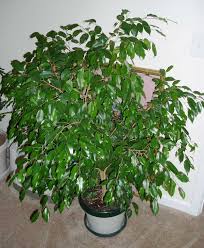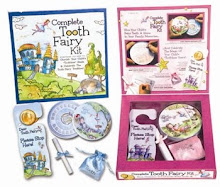


In our efforts to make our homes more “eco-friendly” and energy efficient we have sealed up our homes to prevent cool air from escaping in the summer and warm air in the winter and in doing so have trapped indoor pollutants in our living and breathing space. I don’t mean to be an alarmist but the materials used to construct our homes, furniture, carpeting and many other common household products emit harmful vapors into the trapped air in our homes. The most common chemicals are formaldehyde from carpets, plywood, furniture and insulation, benzene from particle board and paints, trichloroethylene from paints, lacquers and varnishes and carbon monoxide. The continued accumulations of these chemicals in our homes has the potential of causing a variety of health related problems including respiratory problems and skin problems,
Before you rush to move to the mountains and live in a cave you should know that there is a simple solution to this problem, common house plants! You could also open doors and windows to ventilate your home but for summers in the Southwest and winters in the Northeast this is not a viable solution, so “going green indoors” is an effective, inexpensive way to combat this issue.
NASA conducted a study in the early 80’s, in an effort to find a way to purify the air in their space stations and found that common houseplants can remove up to 85% of the airborne pollutants and help control humidity levels. Over the last 20 years subsequent studies have verified NASA’s results and shown that houseplants at a rate of 1 or 2 per 100 square feet of home will be sufficient to purify the air in our homes. These studies have also shown that in addition to removing the pollutants mentioned above they can also remove up to 50% of airborne molds and reduce dust particles by up to 20%.
There are many other benefits to bringing a little green into your life, plants make rooms feel warm, friendly and more inviting, can decrease blood pressure and stress levels and help improve concentration. They are often used in hospital rooms to help calm patient’s nerves before surgery and decrease recovery times.
There are a wide variety of houseplants that are especially effective at removing the pollutants in our homes and most are low maintenance and even hard to kill for you non-green thumbers. All they require is a little water, sunlight and an occasional dusting. The plants that are most effective as air purifiers are:
Bamboo Palm: formaldehyde, CO2, benzene, trichloroethylene English Ivy: formaldehyde, CO2, benzene, mold Peace Lily: formaldehyde, CO2, benzene, trichloroethylene Spider Plants: formaldehyde, benzene, trichloroethylene Dracaena: formaldehyde, CO2, benzene
Several other common houseplants varieties are sturdy and work well as natural air filters. It all depends on your preference in plant styles as plants like Rubber Trees, Golden Pathos, Ficus, Chinese Evergreens and Snake Plants come in a variety of shapes, colors and sizes. You can check your local nursery for the plant that best fit your needs and climate.
You can all breath a little easier now that you know about our little green helpers, the common houseplant. No need to get rid of all your furniture, carpeting and interior walls of your home, just pick up a few house plants, give them a little TLC and take a deep breath!
Before you rush to move to the mountains and live in a cave you should know that there is a simple solution to this problem, common house plants! You could also open doors and windows to ventilate your home but for summers in the Southwest and winters in the Northeast this is not a viable solution, so “going green indoors” is an effective, inexpensive way to combat this issue.
NASA conducted a study in the early 80’s, in an effort to find a way to purify the air in their space stations and found that common houseplants can remove up to 85% of the airborne pollutants and help control humidity levels. Over the last 20 years subsequent studies have verified NASA’s results and shown that houseplants at a rate of 1 or 2 per 100 square feet of home will be sufficient to purify the air in our homes. These studies have also shown that in addition to removing the pollutants mentioned above they can also remove up to 50% of airborne molds and reduce dust particles by up to 20%.
There are many other benefits to bringing a little green into your life, plants make rooms feel warm, friendly and more inviting, can decrease blood pressure and stress levels and help improve concentration. They are often used in hospital rooms to help calm patient’s nerves before surgery and decrease recovery times.
There are a wide variety of houseplants that are especially effective at removing the pollutants in our homes and most are low maintenance and even hard to kill for you non-green thumbers. All they require is a little water, sunlight and an occasional dusting. The plants that are most effective as air purifiers are:
Bamboo Palm: formaldehyde, CO2, benzene, trichloroethylene English Ivy: formaldehyde, CO2, benzene, mold Peace Lily: formaldehyde, CO2, benzene, trichloroethylene Spider Plants: formaldehyde, benzene, trichloroethylene Dracaena: formaldehyde, CO2, benzene
Several other common houseplants varieties are sturdy and work well as natural air filters. It all depends on your preference in plant styles as plants like Rubber Trees, Golden Pathos, Ficus, Chinese Evergreens and Snake Plants come in a variety of shapes, colors and sizes. You can check your local nursery for the plant that best fit your needs and climate.
You can all breath a little easier now that you know about our little green helpers, the common houseplant. No need to get rid of all your furniture, carpeting and interior walls of your home, just pick up a few house plants, give them a little TLC and take a deep breath!
Article contributed by Gary Hillery. Gary's website is all about living Green and full of great information. He also has a new ebook that's called "The Green Crusaders". It's a book written for children with great characters that help to teach them some of the basics of going green.








1.jpg)









No comments:
Post a Comment